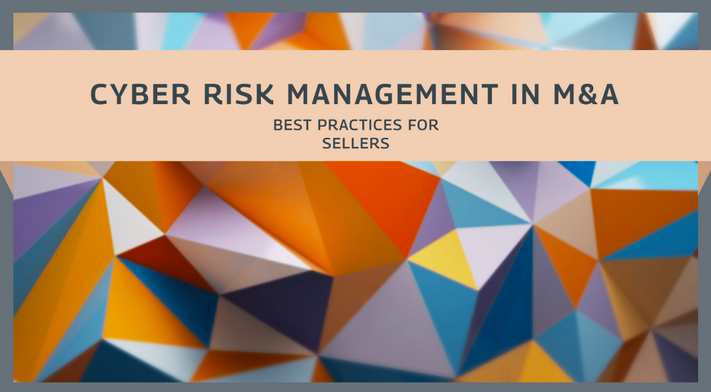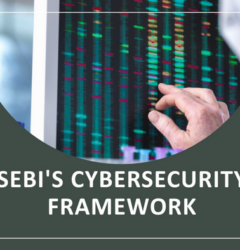

In our previous post, the importance of cyber risk assessments in M and A was explained thoroughly.
Mergers and acquisitions (M&A) represent a strategic opportunity for companies to achieve market leadership, expand capabilities, and propel significant growth. However, navigating the complexities of an M&A transaction demands a meticulous approach that prioritizes risk mitigation across all facets of the business. For buyers, this journey necessitates a focus on cybersecurity risk management (CRM) to ensure a secure and successful deal.
This comprehensive guide equips buyers with the knowledge and best practices to proactively manage cyber risks during M&A, fostering a secure foundation for the future combined entity.
1. Integrating Cyber Risk Assessment in M and A into Due Diligence:
A comprehensive due diligence process is the bedrock of any successful M&A. However, for a buyer, a traditional financial and legal review is no longer sufficient. Integrating cyber risk assessments into due diligence is essential to uncover potential vulnerabilities that could pose significant risks post-acquisition.
This assessment should delve into critical areas, including:
-
Security Controls: A thorough evaluation of the target company’s existing security measures, including firewalls, intrusion detection systems, data encryption practices, and access controls.
-
Data Security Practices: Assess the target’s data security policies, data classification procedures, and incident response plans. This ensures adherence to industry best practices and regulatory compliance.
-
Vulnerability Management: Analyze the target’s vulnerability management program, including patch management practices and penetration testing procedures. This identifies areas where the target company may be susceptible to exploitation.
-
Compliance Landscape: Ensure the target company complies with relevant data privacy regulations, such as GDPR or CCPA. Non-compliance can lead to significant regulatory fines and reputational damage.
2. Identifying Hidden Liabilities and Mitigating Future Risks:
Cyber risk assessments act as a valuable tool for uncovering hidden vulnerabilities within the target company. This knowledge empowers buyers to:
-
Negotiate Deal Terms: Identified vulnerabilities can translate into potential liabilities, allowing buyers to adjust the purchase price accordingly.
-
Plan for Remediation: Estimate the cost of bolstering the target company’s cyber defenses. This enables informed financial planning for post-acquisition integration.
-
Make Informed Decisions: Evaluate the potential impact on the buyer’s own security posture. Understanding these risks allows buyers to make informed decisions regarding the overall viability of the deal.
3. Developing a Proactive Integration Strategy:
Successful integration is critical to maximize the value of an M&A transaction. From the outset, buyers should adopt a proactive approach to integrating the target company’s cybersecurity infrastructure. This includes:
-
Security Policy Harmonization: Develop a unified security policy that incorporates the strengths of both companies’ existing policies. This ensures consistency and reduces the risk of confusion or exploitation.
-
Standardization of Security Tools: Consolidate security tools and technologies to create a consistent and robust security environment. This streamlines operations and simplifies security management post-merger.
-
Employee Training and Awareness: Develop comprehensive cybersecurity training programs for all employees of the merged entity. Fostering a culture of security awareness across the organization is crucial for overall cyber resilience.
4. Prioritizing Communication and Transparency:
Open communication is crucial throughout the M&A process, and cybersecurity is no exception. Buyers should maintain transparency with stakeholders, including:
-
Target Company Employees: Communicate the planned integration of security measures in a clear and concise manner, addressing any concerns they may have.
-
Internal IT Teams: Collaborate with internal IT teams to develop a seamless integration plan for IT infrastructure and security protocols. This ensures a smooth transition and minimizes disruption.
-
Regulatory Bodies: Ensure compliance with relevant data privacy regulations throughout the integration process. Proactive communication with regulators helps avoid potential roadblocks.
5. Investing in Post-Merger Security Optimization:
Integration can be a time of increased vulnerability. Buyers should invest in additional security measures to mitigate risks during the post-merger period. These measures may include:
-
Security Audits: Conduct post-merger security audits to identify any lingering vulnerabilities that may have been missed during the initial assessment.
-
Threat Hunting: Implement proactive threat-hunting strategies to detect and neutralize cyber threats early. This proactive approach minimizes the potential impact of cyberattacks.
-
Incident Response Readiness: Test and update the merged entity’s incident response plan to ensure a swift and coordinated response to security breaches. Effective incident response minimizes downtime and reputational damage.
Conclusion:
Cyber risk management is no longer an afterthought in the M&A process; it’s a strategic imperative. By integrating cyber risk assessments into due diligence, proactively addressing vulnerabilities, and fostering a culture of security awareness, buyers can navigate M&A with confidence. Remember, a secure merger is a successful merger, paving the way for a more resilient and thriving combined entity.
NOTE : In the final and third part of this series we will post it from seller’s perspective. Stay Tuned.
















Recent Comments